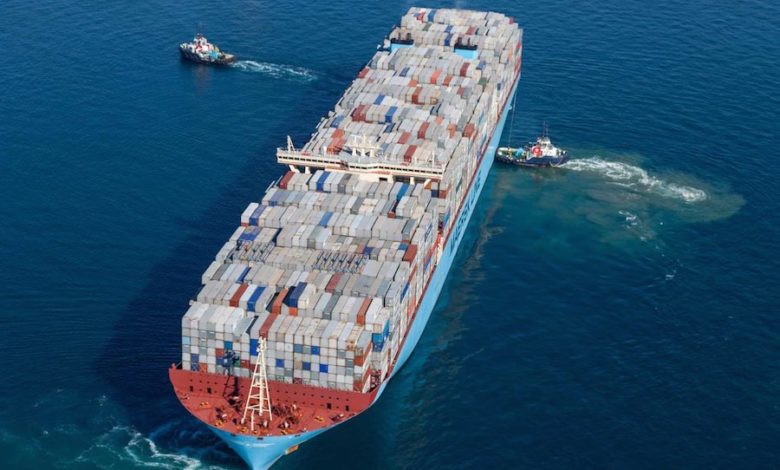SCFI snaps losing streak

The Shanghai Containerized Freight Index (SCFI) – a key spot metric for box shipping – snapped its 19-week losing streak today, with many analysts now suggesting the peak season, combined with Shanghai’s reopening, could see rates roar back.
The SCFI has been on a regular seasonal lull since Chinese New Year, but today it finally rose, increasing fractionally by 14 points, while the China Containerized Freight Index also rose too.
Writing on LinkedIn, Lars Jensen, CEO of liner consultancy Vespucci Maritime, stated: “A single week in itself does not create a trend, however when looking at the week-on-week developments in 2022, a clear pattern emerges where the (seasonal) decline bottomed out a month ago and rate conditions for Chinese exports are on an upwards trajectory.”
Meanwhile, Drewry’s composite World Container Index decreased marginally by 0.1% to $7,648.18 per 40ft container this week.
Carriers will be prone to introduce surcharges with many new names if cargoes are rushed out of Shanghai
Shanghai authorities have laid out a roadmap for reopening the city of 26m people in the coming month after one of the longest covid lockdowns experienced in the People’s Republic to date.
Drewry estimates 260,000 teu of export cargo was not shipped from Shanghai in April alone, warning in a new report of further capacity challenges in the coming months coinciding with the peak summer season.
Drewry consultants warned that the latest disruption of the global container system will see things worsen for BCOs before a partial improvement.
A joint research paper published this week by Windward and Sea-Intelligence looked at the congestion issue in Shanghai, the world’s largest container port, suggesting that when the port does fully reopen, it will be mainly for imports of full containers, many of which contain raw materials required for the starved factories in the hinterland to function. Export containers will consist of goods produced before or during the lockdown, but held up in export facilities at the factories, or elsewhere.
“There is no way of knowing how many containers are, or can already be, stuffed and ready to move, but it is safe to say that the amount is substantial,” the joint study suggested, adding that for export operations to run efficiently, Shanghai port must first be “drained” of many prepositioned empties, which will take time.
“Shanghai is now bursting with such containers, and if not cleared or substantially reduced, there may be little room for export loading movements to occur as smoothly as they normally do,” the authors of the report warned, going on to discuss the so-called ketchup effect that will hit overseas destinations when Shanghai ramps up exports, something that will be all the larger as both US and European ports are already suffering from very high congestion levels – and in the case of the US, far lower productivity.
Peter Sand, chief analyst at container platform Xeneta, told Splash, “In the coming months, we will see just how much demand has been pent up. A lot or just a little bit. Only for sure we know that intra-Asian supply chains – container shipping’s pipelines – have been hard hit.”
Sand advised shippers to keep a track on global rate benchmarks rather than focusing too closely on the SCFI.
He also had a warning for shippers, telling Splash: “Without doubt, carriers will be prone to introduce surcharges with many new names if cargoes are rushed out of Shanghai when the reopening allows for it.”
